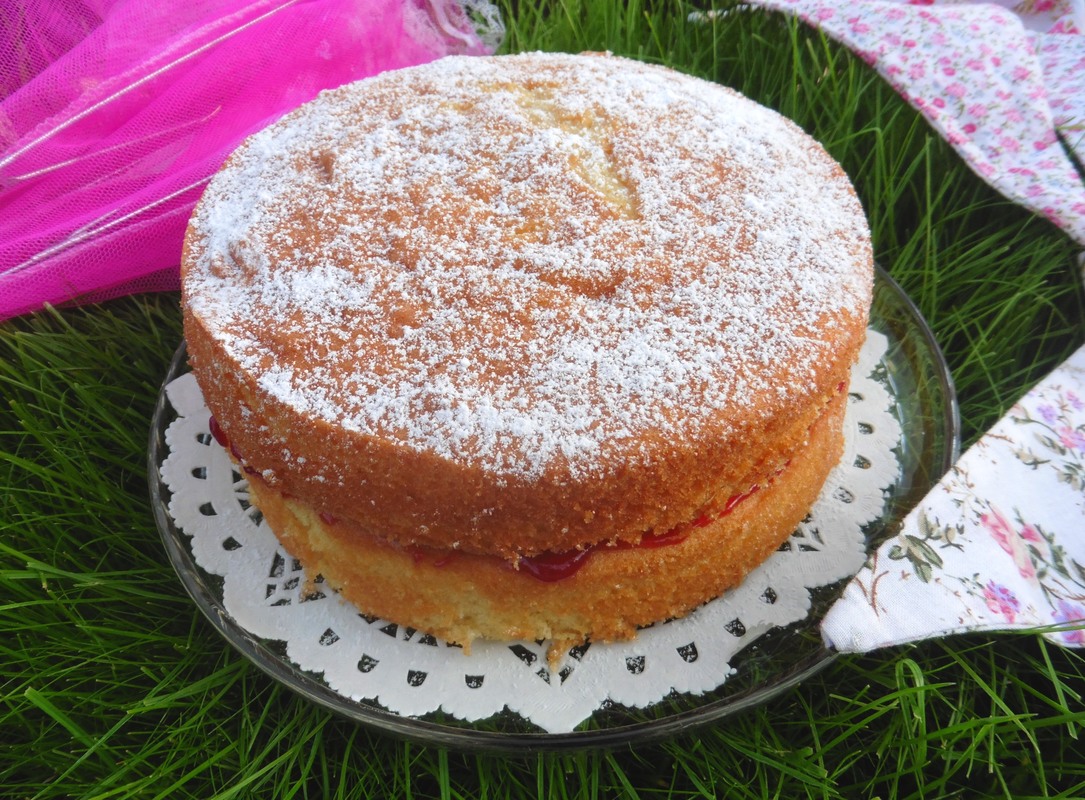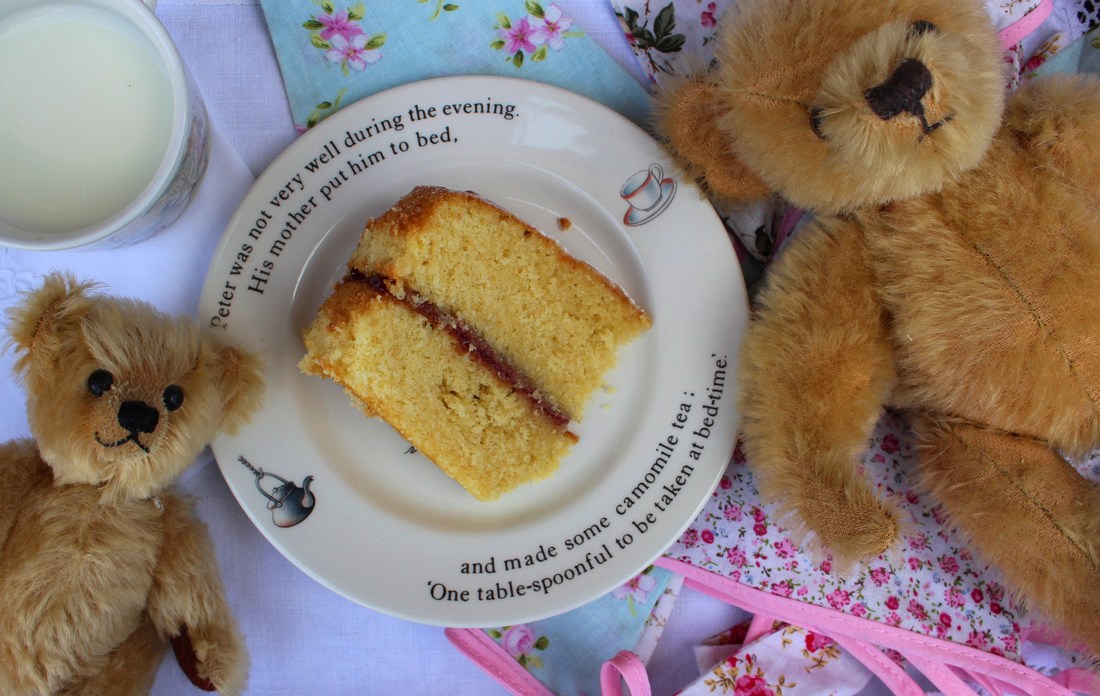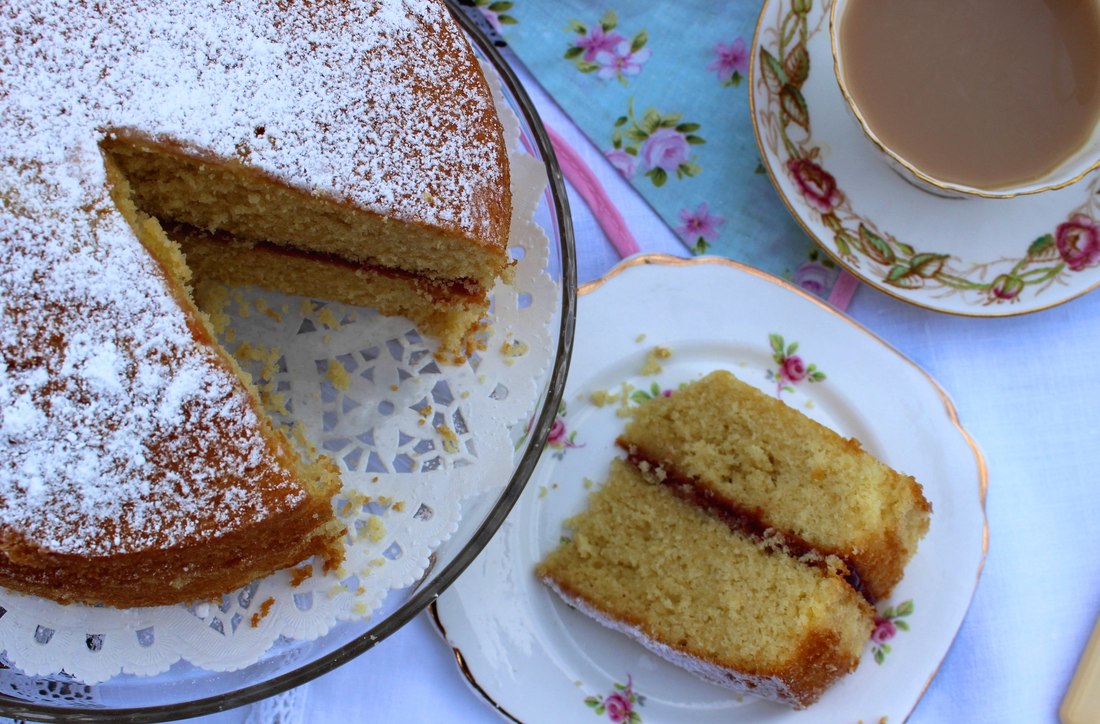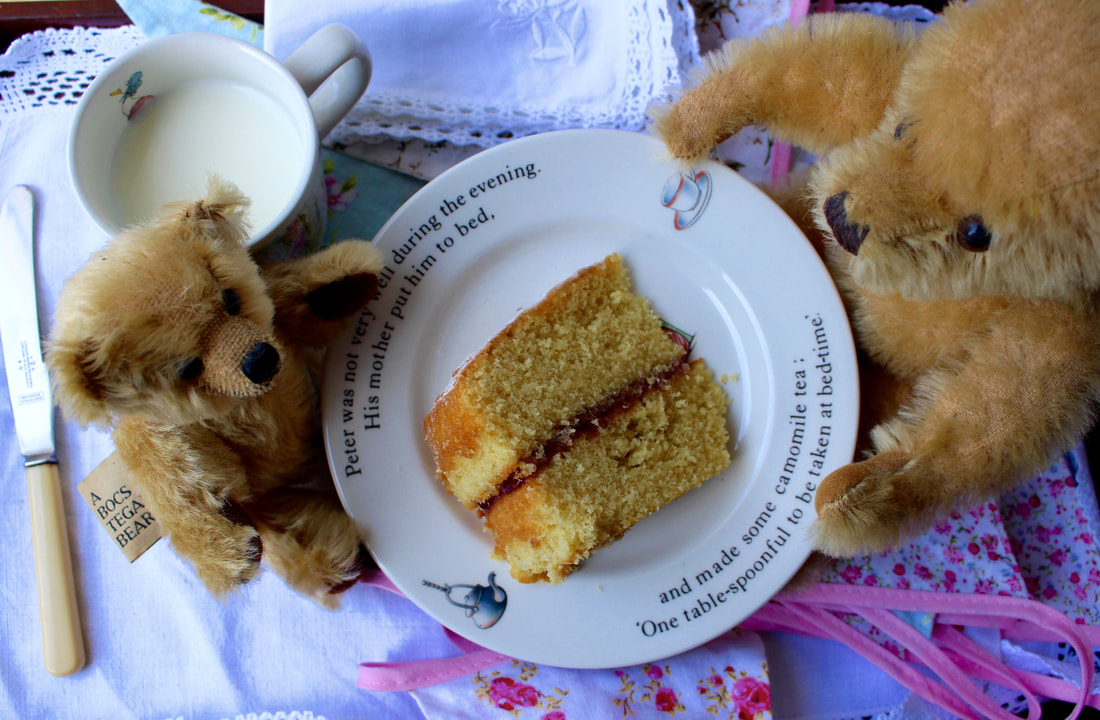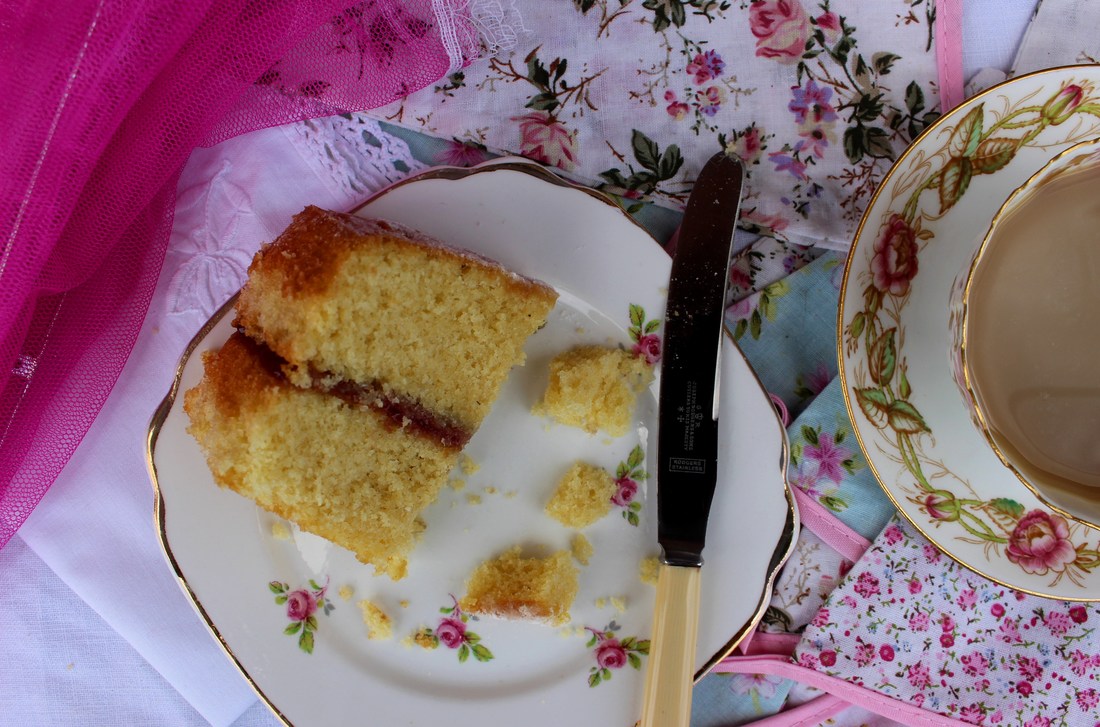|
Miss Windsor and I have come to the end of our summer garden party collaboration, and hope you’ve very much enjoyed it as much as we have. We’re taking a bit of a break now but will be back before too long with a special quartet of recipes inspired by our respective Italian travels earlier in the year. Until then, we leave you with Miss Windsor’s sparking summer beverages: a fabulous fizzy lemonade which she also uses to make a gorgeous summery cocktail with Pimm’s number 6 cup, a special edition one with elderflower and blackberry. It sounds so nice I can’t wait to try it. I really must get out more as I’d never even heard of this Pimm’s until Miss Windsor told me about it! And, finally, from me a classic Victoria sponge. Every garden party needs a nice simple Victoria sponge so here you are; complete with tips and a brief cake history. (You may be wondering why our garden party has suddenly morphed into a bit of a Teddy Bear's Picnic as well, but all will become clear as you read on.) Finding Comfort in Cake Named in honour of Queen Victoria, Victoria sponge is still a favourite on the royal tea table today. There’s rather a sad story behind it. After Prince Albert died suddenly (he was only 42) Queen Victoria was understandably completely distraught and withdrew to Osborne House on the Isle of Wight where she and Albert had spent several happy holidays. There she found the new custom of afternoon tea a great comfort: one of her favourite cakes was a plain, light sponge filled with jam. She asked for it so often it became known variously as Victoria sponge, Victoria sandwich, Victoria sponge sandwich or Victoria sponge cake. From Nursery to Grown-Up Tea Table This simple sponge had originally been a popular choice for nursery teas: it was plain and wholesome, yet appealingly soft-textured and sweet. Victoria and Albert had been at the forefront of the brand new nursery concept, encouraging parents to allow their children to enjoy childhood with special games, books and toys. Prior to this infants progressed more or less directly from babyhood to virtual mini-adulthood. The royal couple had made a point of being present at nursery tea whenever they were home and Victoria must have enjoyed a slice of jam sponge frequently as they played with their brood. In the first throes of her grief she may have sought solace in these happy memories and found the cake consoling as well as easy to digest. In Victoria’s time, her kitchen maids would have spent hours building up their muscles creaming and mixing the sponge by hand, even after the helpful arrival in Britain of baking powder in 1856. Some cooks still swear by the creaming method but it’s much easier to whip up your sponge by electric means using a food processor, electric mixer or electric hand whisk. Baking Tips
As with many cooks, this was the first sponge cake I learned to make, and for years now I’ve whipped mine up in a basic food processor using the blade attachment. After a few false starts with self-raising flour I switched to plain and added my own raising agents. Self-raising flour must be really, really, fresh to work properly and even then I find it touch and go. A combination of cream of tartar and bicarbonate of soda with a ratio of 2:1 works wonders in the well-risen, light and fluffy stakes. Real butter, slightly salted and softened, the freshest eggs and raspberry jam, ideally seedless, sieved if not, are other essentials. After that, the only variable you have to contend with is your oven, which, ideally, would always runs at consistent temperatures corresponding exactly to the dial and have no hot or cold spots at all. Alas, many of us are at the mercy of our ovens . . . . Ingredients
Seedless or sieved raspberry jam and icing sugar to finish Method
Toodles! Mrs Simkins X
1 Comment
23/8/2018 07:23:05 pm
I am going to have to try your method of SR flour when making dumplings (the suet ones). Winter will soon be fast upon us!
Reply
Your comment will be posted after it is approved.
Leave a Reply. |
Search for recipes
Archives
June 2020
Categories
All
|

